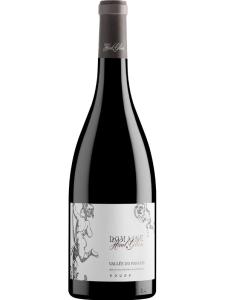Vallee du Paradis is an IGP title that covers wines made in the eastern foothills of the Pyrenees, in the Languedoc-Roussillon region of France. The evocatively-named IGP exists as an alternative geographical indicator for wines that fall outside of the requirements of the AOC-level Corbieres appellation that also covers the land in the area.
The IGP’s catchment area is on the southern border of the Aude administrative department on the Mediterranean coast. Vineyards sit among the garrigue-strewn limestone hillsides that make up this part of the eastern Pyrenees, leaving the area with a typical southern French character. The warm Mediterranean climate completes this effect.
© Wikimedia/Rauenstein
The Vallee du Paradis vineyards enjoy hot, dry summers that are well suited to viticulture and rainy spring and autumn seasons that contribute to the hydration of the vines. Ample sunshine helps with the development of rich flavor in the grapes, and constant winds from the northwest bring a cooling influence to the vineyards. This ensures that ripening does not happen too quickly, and that flavor is balanced with acidity. These winds also reduce disease pressure by drying the canopy, something that is particularly important during rainstorms in spring and fall.
Soils tend to be derived from the limestone of the Pyrenees, with some schist also found in the vineyards. These soils are moderately deep with good drainage that comes from slope, ensuring that the vines are not waterlogged during times of heavy rain. This curbs leafy vigor and improves the concentration of sugars in the grapes.
Vallee du Paradis IGP wines are typically made from classic Mediterranean varieties, including Carignan, Cinsaut, Grenache and Maccabeu. In the last 20 years, this has been ameliorated by France’s more international grape varieties – in particular, Cabernet Sauvignon, Chardonnay and Merlot.
The vineyards in the area were previously covered by the Vin de Pays category of wines. In 2009, French wine authorities began to phase out this classification and replace it with Indication Géographique Protégée. This has brought French labeling conventions in line with those of the European Union, as well as shaking of some of the poor image of Vin de Pays.




